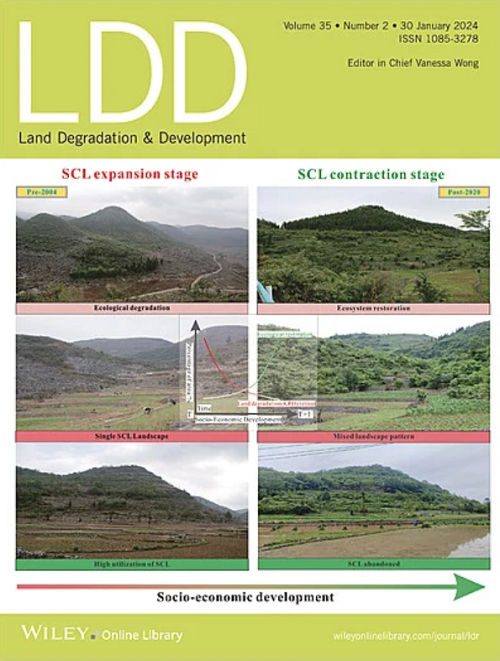Impacts of the Ecosystem Transformation in Red Jujube Commercial Forests on the Soil Organic Carbon Sources and Stability in the Lvliang Mountains
IF 3.6
2区 农林科学
Q2 ENVIRONMENTAL SCIENCES
引用次数: 0
Abstract
Soil organic carbon (SOC) stabilization is vital for the mitigation of global climate change and retention of soil carbon stocks. The Loess Plateau is a crucial ecological zone in China and even worldwide for major ecosystem protection. However, in the Loess Plateau, there are knowledge gaps about the response of SOC sources and stabilization to different ecological transitions of jujube economic forests. Therefore, our study used clean-cultivated jujube orchards as a control (CK) and selected five main ecosystem transformation models of abandoned jujube orchards on Lvliang Mountain: abandoned farmland (AF), replanted with Astragalus-Bupleurum (AB), replanted with alfalfa (AL), replanted with Chinese pine (CP), and replanted with Chinese arborvitae (PO). The soil properties, sources and physical fractions of organic carbon and their correlations in the 0- to 20-cm soil layer at each sample site were analyzed. The results show that the ecosystem transformation significantly increased the SOC by affecting plant- and microbe-derived carbon and altering its components. Different treatments have varying impacts on the SOC content. The lignin phenol (VSC) content in the soils in the five ecosystem transformation models was greater than that in the CK and had the following ranking: CP > AL > PO > AF > AB (p < 0.05). The ecosystem transformation also significantly increased the soil total amino sugar (TAS) content, microbial residue carbon (MRC), and its contribution to organic carbon. Additionally, it promoted the accumulation of particulate organic carbon (POC) and mineral-associated organic carbon (MAOC) and positively impacted the carbon stability. Among the five ecosystem transformation models, CP had the greatest impact on lignin phenols, amino sugars, SOC content, and stability, whereas AF and AB contributed the least to SOC. The results of this study provide a scientific basis to assess and select optimal transformation modes for the ecosystem transformation of commercial jujube forests.求助全文
约1分钟内获得全文
求助全文
来源期刊

Land Degradation & Development
农林科学-环境科学
CiteScore
7.70
自引率
8.50%
发文量
379
审稿时长
5.5 months
期刊介绍:
Land Degradation & Development is an international journal which seeks to promote rational study of the recognition, monitoring, control and rehabilitation of degradation in terrestrial environments. The journal focuses on:
- what land degradation is;
- what causes land degradation;
- the impacts of land degradation
- the scale of land degradation;
- the history, current status or future trends of land degradation;
- avoidance, mitigation and control of land degradation;
- remedial actions to rehabilitate or restore degraded land;
- sustainable land management.
 求助内容:
求助内容: 应助结果提醒方式:
应助结果提醒方式:


